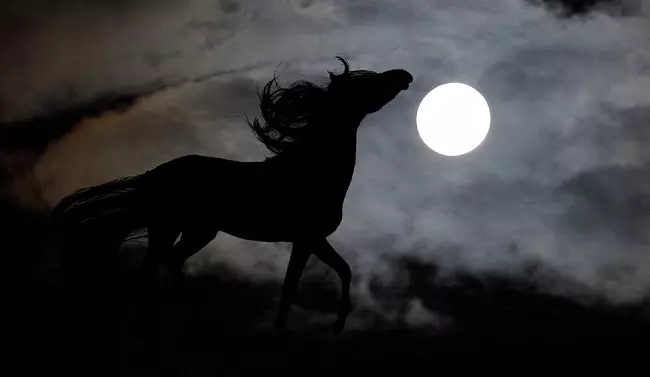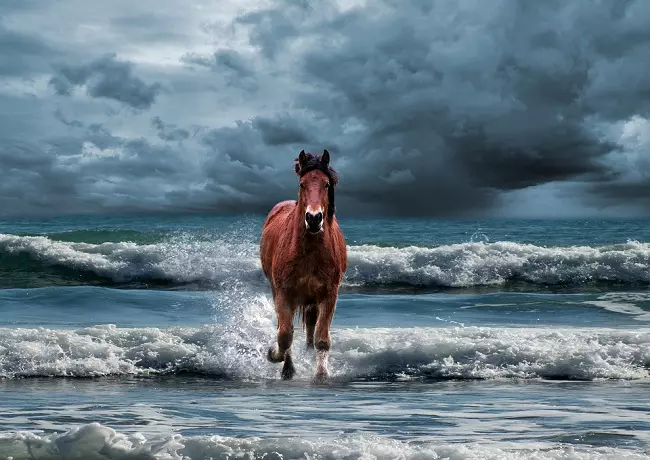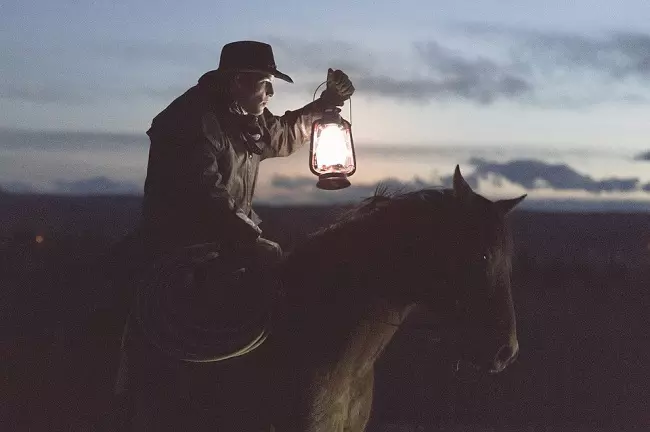Eerie horses in folklore and literature
If you think horses can't be scary, eerie or frightening, you might change your mind after learning about four fearsome beasts and spirits - all bearing a horse's disguise.
There are several folk tales about spirits taking the shape of horses and mules (Photo: pixabay.com / Tanja Mikkelsen)
From Cerberus, the fearful black cadejos, the Dobhar-chú and the axehandle hound to the ghostly black dogs - just like the The Black Dog of Newgate, one of the most famous of them all -, we can find frightening and ghostly dogs in mythology, folklore and legends. This is no surprise, considering the fact that dogs are carnivores, and descent from the wolves, which were regarded as mysterious and dangerous creatures for centuries. As for other domesticated animals, there are usually less legends and myths existing about their "evil" and "fearful" likes, but it does not mean that we can't find some really creepy or dark legendary beasts that bear their shapes. Below are some of the "creepiest" horses from literature and folklore!
Water kelpie
Water kelpies are shape-shifting spirits living in Scotland's waters, and though they can appear is many forms, they are said to be beautiful horses most of the times when emerging from the waters to lure, betray and kill humans who they encounter. Some say the kelpies can take up a human form too, but when doing so, their legs still end in hooves.
One of the strangest stories about kelpies tells us that these evil spirits can haunt people long after they disappeared into the sea. According to the story, as told by Discovery Eduction, approximately a hundred years ago a family - a mother, a father and two girls - took a trip to the ocean coast, which, much to their surprise, was empty. However, they thought the lack of people on the beach was due to the cold weather, and they stayed to have some fun, and take a family portrait. The father of the two girls was an enthusiastic "hobby photographer", who had just got his hands on a new machine before their trip to the shore, and he was excited to try it out.
Soon as the man adjusted the timing and joined his family members, a magnificent dark horse with bridle came by, seemingly out of nowhere. The family - being horse lovers and horse owners - was first thrilled to meet the mysterious animal, and the father, who was an experienced rider, decided to mount the horse. Although the stallion had no saddle, the man thought he would be able to control it, but not long after he got onto its back, the horse started galloping right into the waves, completely out of control. In the matter of seconds, the water engulfed the man, whose body was never found.
If this wasn't strange enough, the photo taken at the beach started changing over time: the mysterious horse and the man started fading away, and finally vanished. Meanwhile, the two girls and the mother could still be clearly seen on the picture...
Water kelpies are shape-shifting spirits living in Scotland's waters... (Photo: pixabay.com / Mateusz Wyszyński)
The horse of Metzengerstein
Edgar Allen Poe wrote many memorable "horror stories", one of which is about a demonic horse who took the cruel and wealthy Frederick, Baron of Metzengerstein, into the flames.
The story takes place somewhere in Hungary at an unspecified date, and is about the rivalry of the Metzengerstein and the Berlifitzing families. The young Frederick inherits a huge amount of wealth, and soon he starts acting in a cruel way. When the stables of the Berlifitzing family catch fire, it's mostly blamed on Frederick - who, on the day of the fire, sees an old tapestry with a picture of a huge, unnaturally colored horse on it. The horse on the tapestry belongs to the Berlifitzings, and its rider is seen killed by the dagger of a Metzengerstein.
When Frederick leaves the room, he sees a horse with the letters W.V.B. (supposedly standing for William Von Berlifitzing) branded on its forehead, but he keeps the animal anyway, and soon becomes "inseparable" with it. It later turns out, that William Von Berlifitzing had died in the fire while trying to save a horse of his.
Frederick's habits change as days go by, and he becomes obsessed with the horse. One night, he goes out for a ride, as usual, when something unexpected happens. After the castle of Metzengerstein catches fire, the horse comes back, and takes the rider into the flames, killing the last member of the wealthy family. The fire then dies away, and the smokes form an enormous horse-shaped cloud above the structure.
While this story was written by Edgar Allen Poe for a contest at the Saturday Courier, the writer did incorporate many parts and symbols of Gothic fiction and popular "mythical" stories into the short story.
The Cheval Mallet
As French folklore describes it, the Cheval Mallet is a magnificent, yet evil horse that tends to appear at night - most often at midnight - wearing a saddle and bridle. It approaches exhausted travelers, and tries to tempt them to get into the saddle. Once the unlucky travelers are on its back, the horse runs away, and takes the people to an unknown place. Many legends claim that those who mounted this evil horse disappeared forever, unless they had the protection of St. Benedict or paid for the ride.
The Cheval Mallet appears at night to tempt the lonely and exhausted travelers (Photo: pixabay.com / StockSnap)
The Gytrash
The Gytrash is another spirit that can, and does take the shape of a horse. Other times it is said to appear as a large black dog or a mule. But no matter what form is chooses, it has one purpose: to haunt and deter travelers. The legendary creature accompanies lonely travelers, then leads them astray.
The Gytrash was also known as the Shagfoal in some parts of England, and was said to appear in the shape of mules or donkeys, but with eyes glowing like burning coals. There is, however one notable difference between the Gytrash and the Shagfoal: the latter is always evil, while according to legends, the Gytrash sometimes actually guides lost travelers to the right direction, instead of deterring or confusing them.
Anita Diós
June 2018


